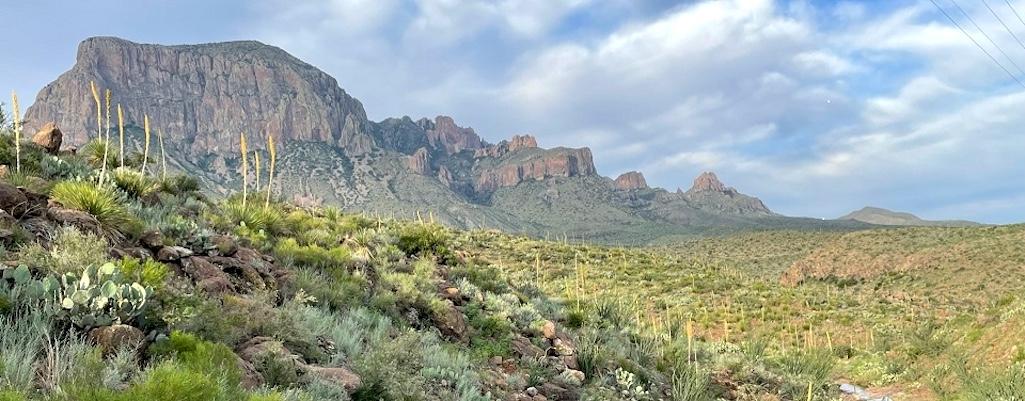
Spring is the busiest time of year in Big Bend and park visitors should be prepared for limited parking, full campgrounds and lodging./NPS, C. Negele
Big Bend National Park in West Texas is expecting a very busy spring break this year, and officials are urging visitors to make camping or lodging arrangement before heading to the park.
Spring in the Chihuahuan Desert lures many visitors to remote West Texas, especially during the months of March and April. As travelers seek solace from educational routines, and escape wintry conditions, the park experiences significant increases in visitation. Big Bend is already experiencing record visitation and those who anticipate spending spring break 2024 in the park will need to plan ahead and be prepared.
Visitors are strongly encouraged to make camping/lodging arrangements either in the park or gateway communities before journeying all the way to Big Bend, a park release said Monday. Since early February, all campgrounds and most primitive campsites have been filling each day by late morning.
“We expect another extremely busy spring break this year,” said Chief of Interpretation & Visitor Services Tom VandenBerg. “Many people are making the long journey to this remote park, only to find that many other people have also planned to do the same thing and that all camping sites and lodging options are already reserved."
Reservations are required for all Big Bend National Park campgrounds. Campers can make reservations up to six months in advance, with a limited number of campsites reservable up to 14 days in advance. Reservations are made through the online reservation portal at www.recreation.gov. Most sites are already reserved for the spring break period.
Backcountry permits are required for all backpacking and primitive campsites. The most popular backcountry sites are available for online permits up to six months in advance via www.recreation.gov. Most sites have already been reserved. For those with rugged vehicles, a handful of remote primitive roadside campsites are available for in-person permitting. Permits may be obtained in person up to 24 hours in advance at the Panther Junction (8:30 a.m-5 p.m.) and Chisos Basin (8:30 a.m.-4 p.m.) Visitor Centers.
Visitors seeking lodging inside the park without reservations may have difficulty finding accommodations. A fortunate few may be able to take advantage of last-minute cancellations at the Chisos Mountains Lodge, the only lodging facility in the park. Contact the lodge at (432) 477-2291 for more information. Additional camping facilities, RV parks, and lodging are located in communities outside the park. Current listings are available at www.visitbigbend.com.
Spring visitors will also find limited parking at many of the park’s most popular areas and trailheads. Visitors to the Lost Mine Trail, Chisos Basin, Hot Springs, Boquillas Port of Entry, Boquillas Canyon, and Santa Elena Canyon Trail may experience delays. When all parking is full, rangers will establish “one-in, one-out” traffic control measures in these areas. Visitors should have alternate itineraries planned.
"More than ever, people are seeking out the qualities of this special place. Spring is a beautiful time to visit Big Bend, but also the busiest. Many are surprised at the crowds and disappointed to find that there is nowhere to stay," continued VandenBerg. “We wish to encourage people to also visit during other times of the year to maximize enjoyment of Big Bend, and the remote sense of peacefulness that it is known for."



Comments
I furst visited BBNP in 1995, and again in 2009, & 2012. It was a remote, quiet, and not too busy place. It was a gem.
Last visited BBNP in 2017 when I had to chase off a squatter family in my Chiso Basin campsite. It was amazing to watch and hear the squatters lie about reserving the site while my name was on the tag on the post! Amazing & sad.
We later mioved to Rio Grande Village campground--the camp host was on us as we backed in, looking for squatters!
It's getting too much of a chore to stay overnight in these places. What are we to do?
I agree with A. Johnson, above, but I would include all of Texas (along the Rio Grande), and all campgrounds in states (NM, AZ, and CA) that are relatively near the Mexican border. I am surprised that no one seems to be talking about the elevated risk to campers and RV'ers in those states. The danger is real.